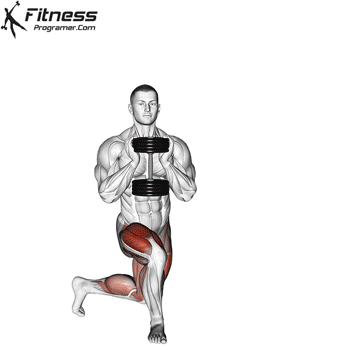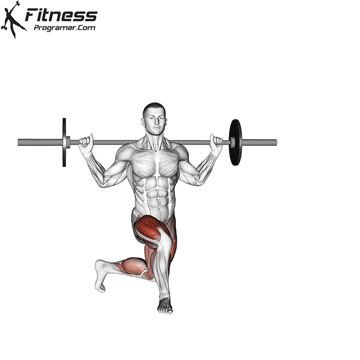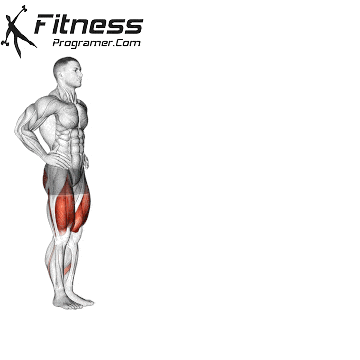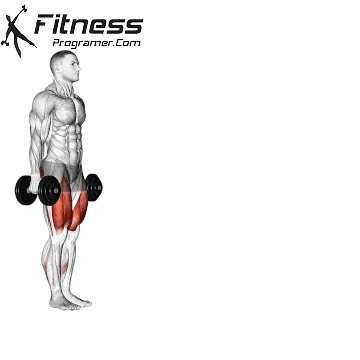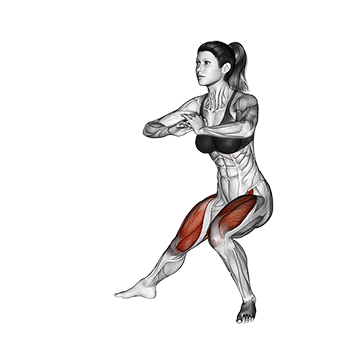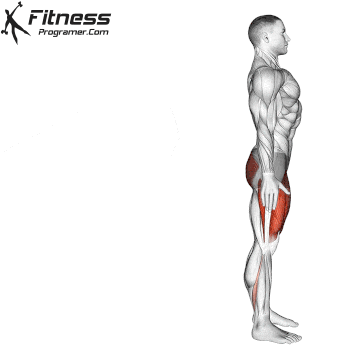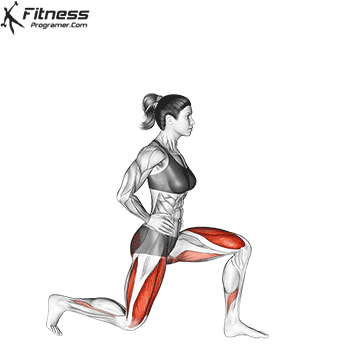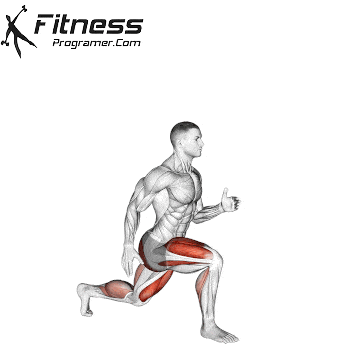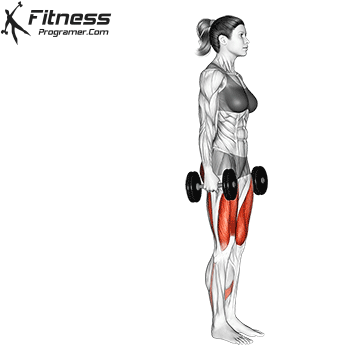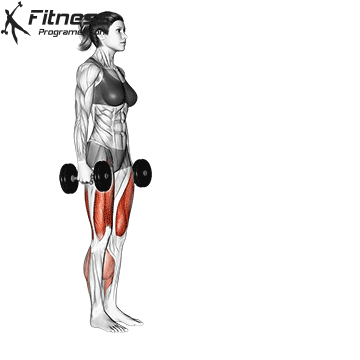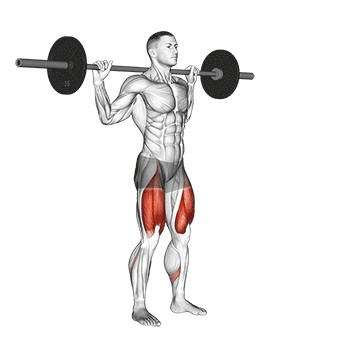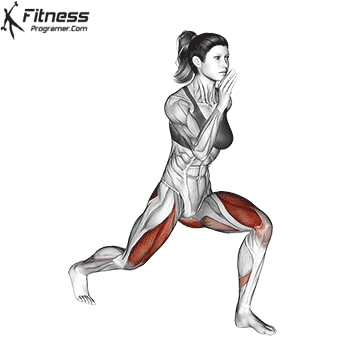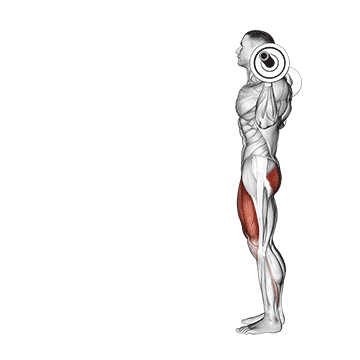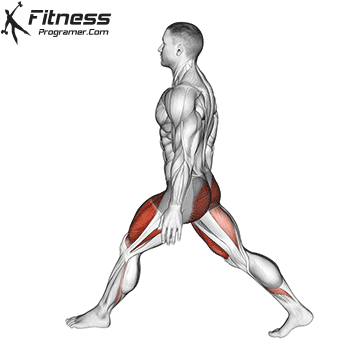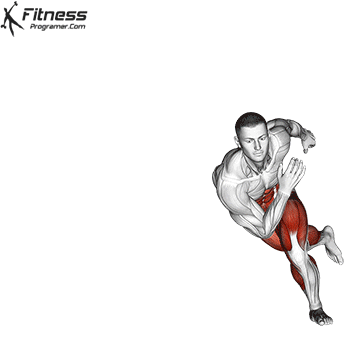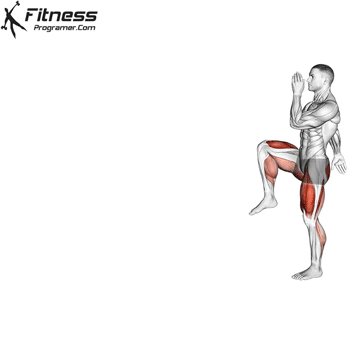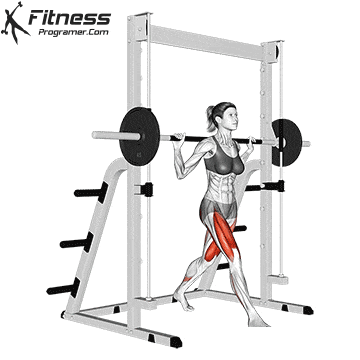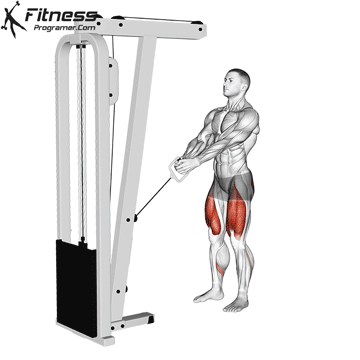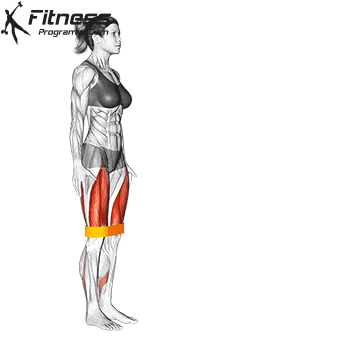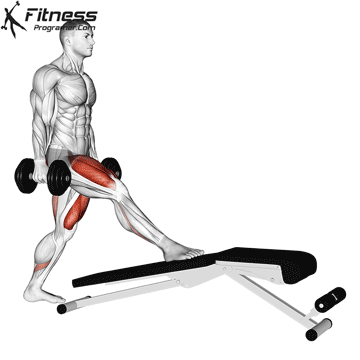Overview
The curtsy lunge is a variation of the lunge exercise that targets the muscles of the lower body, particularly the quadriceps, glutes, and adductors, while also engaging the core for stability. It involves stepping one leg behind the body at an angle, similar to performing a curtsy, hence the name.
The curtsy lunge is an effective exercise for targeting multiple muscles in the lower body and can help improve strength, stability, and mobility. It’s commonly incorporated into lower body workouts or as part of a dynamic warm-up routine.
How to Perform Curtsy Lunge
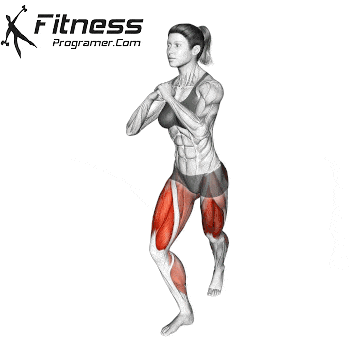
- Position yourself with your feet spaced hip-width apart, and keep your hands in front of your chest to help maintain balance.
- Take a step diagonally behind you with your left foot, crossing it behind your right leg as if you were curtsying.
- Bend both knees, lowering your body until your right thigh is parallel to the floor, and your left knee nearly touches the floor.
- Push through your right heel to drive yourself back up to the starting position. Keep your torso upright and your chest lifted throughout the movement.
- Continue alternating sides for the desired number of repetitions.
Master The Curtsy Lunge
Mastering the curtsy lunge involves paying attention to your form and gradually increasing the challenge as you become more proficient. As you lower your body, focus on pressing through the heel of your front foot to engage the muscles in your quads and glutes.
Like any exercise, consistent practice is key to mastering the curtsy lunge. Once you’ve mastered the basic curtsy lunge, you can increase the challenge by holding dumbbells or adding resistance bands.
Tips for Proper Form:
- Keep your chest lifted and your shoulders relaxed throughout the movement.
- Engage your core muscles to stabilize your spine and pelvis.
- Keep your back straight, and avoid leaning forward or rounding your spine.
- Maintain a slow and controlled movement pattern to maximize the effectiveness of the exercise and reduce the risk of injury.
Common Mistakes
Leaning too far forward, which can reduce glute activation and strain the lower back.
Letting the front knee collapse inward, increasing stress on the knee joint.
Using momentum instead of control, which limits muscle engagement and balance training.
Not stepping far enough behind, which reduces range of motion and effectiveness.
Turning the torso, which can throw off alignment and reduce glute recruitment.
Benefits of Curtsy Lunge
1- Targeting Multiple Muscle Groups: Curtsy lunges primarily work the quadriceps, hamstrings, glutes, and adductors (inner thigh muscles). The diagonal motion engages these muscles in a unique way compared to traditional lunges, providing a more comprehensive lower body workout.
2- Improved Balance and Stability: Performing curtsy lunges challenges your balance and stability as you move in a diagonal direction, which helps strengthen the stabilizing muscles around your joints and core.
3- Enhanced Coordination: The cross-behind motion in the curtsy lunge requires coordination and proprioception, which can help improve overall body awareness and coordination.
4- Functional Strength: As a compound exercise, curtsy lunges mimic movements commonly used in daily activities, such as bending, stepping, and shifting weight, making them effective for improving functional strength and mobility.
5- Variety and Muscle Confusion: Incorporating curtsy lunges into your workout routine adds variety and can help prevent workout plateaus by targeting muscles from different angles.
6- Increased Range of Motion: The diagonal stepping motion in curtsy lunges can help improve hip mobility and flexibility, leading to better overall range of motion in the lower body.
7- Calorie Burn and Fat Loss: Like most lower body exercises, curtsy lunges are effective for burning calories and promoting fat loss, especially when incorporated into a high-intensity interval training (HIIT) or circuit training routine.
8- Minimal Equipment Required: Curtsy lunges can be performed with just your body weight or with added resistance such as dumbbells, kettlebells, or resistance bands, making them accessible and versatile for various fitness levels and environments.
How to Incorporate Into Your Routine
The Curtsy Lunge is effective for warm-ups, functional workouts, and lower-body hypertrophy.
- For Beginners: Perform 2 to 3 sets of 8 to 10 reps per leg using bodyweight to master coordination.
- For Hypertrophy: Do 3 to 4 sets of 10 to 12 reps per side, holding dumbbells for added resistance.
- For Strength: Use a heavy dumbbell or kettlebell and complete 3 to 4 sets of 6 to 8 reps per side.
- For Functional Training: Pair with lateral or reverse lunges to train all planes of movement.
- For Circuit Training: Add 8 to 10 reps per leg between upper-body exercises or in full-body circuits.
- For General Fitness: Include 2 to 3 sets of 10 reps per leg in a balanced lower-body session.
- For Mobility and Stability: Perform slow reps as part of a dynamic warm-up or glute activation sequence.
What muscles do curtsy lunge work?
The curtsy lunge primarily targets the quadriceps, but it also engages several other muscles to assist in the movement and provide stability. Here’s a breakdown of the muscles worked during the curtsy lunge:
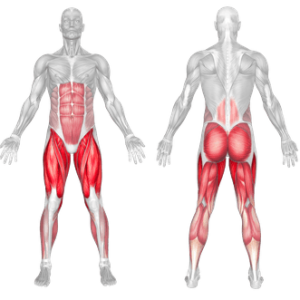
Frequently Asked Questions
Is the Curtsy Lunge bad for knees?
When done correctly with proper alignment, the curtsy lunge is safe. Ensure your knee stays in line with your toes and avoid over-rotating the torso.
Can I add weights to this exercise?
Yes. Once you’ve mastered the movement with bodyweight, hold a dumbbell or kettlebell for progression.
How is it different from a reverse lunge?
The curtsy lunge crosses the leg behind the body diagonally, increasing activation of the glute medius and adductors more than a standard reverse lunge.
How often should I do curtsy lunges?
Include them one to two times a week as part of your leg or functional training routine.
Curtsy Lunge Variations
Curtsy lunges are highly versatile and can be modified in several ways to suit different fitness levels and goals. Variations include reverse lunges, lateral lunges, dumbbell curtsy lunges, jumping lunges, and more. By incorporating different variations, you can target different muscles and add variety to your workouts.

